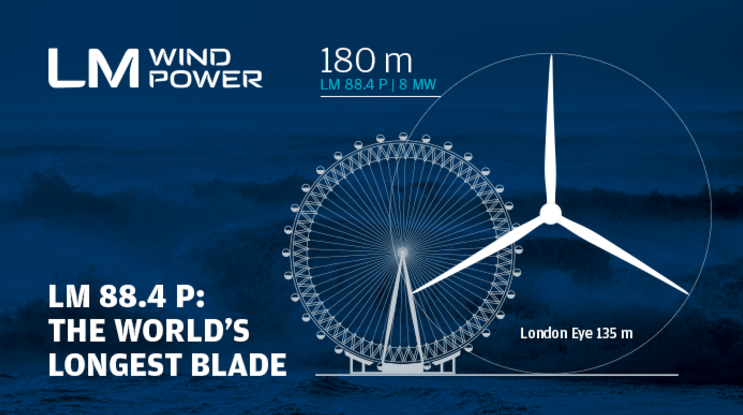
Wind power, one the cleanest forms of alternative energy, is great for the environment: it’s plentiful, renewable, uses no water and little land, and is on the rise globally. Wind farms, consisting of many individual wind turbines, are normally used in conjunction with other electricity sources or storage to provide consistent energy.
Wind power is playing an increasing part in the energy economy and innovation is coming to the size and style of wind turbines (the spinning blades you see that capture the wind to transform it into electricity). One of the more exciting developments in the wind sector is the unveiling of the world’s largest wind turbine. Once constructed, it will be one of the world’s largest manmade structures. For an idea of just how large it is, imagine this: it can cover the entire Coliseum in Rome.
The structure will have a diameter of almost 600 feet, with blades of almost 290 feet. Each one can power up to 10,000 homes, or roughly an entire town. Ten of these turbines could power a city. The blades, which will be the most advanced in the world, would each span the distance of 8 buses. Built by LM Wind Power, a Danish manufacturer, the turbines are being built for placement in offshore wind farms in locations such as the North Sea and potentially off the coast of the US.
These blades are remarkable not just for their size, but also for their advanced materials. Given their location offshore, the blades are being constructed from a newly developed material that can withstand harsh weather. The material consists of a coating five times more resistant than aluminum. And if you’re (rightfully) concerned about lightening, worry not — rigorous in-lab testing has ensured that any strikes would be safe.
LM Wind Power already holds records in blade size, from 2011 and 2004 at 60m and 73.5m respectively. Scaling up is not without its challenges. For example, how do you transport a turbine so large? If they are to be transported by public roads, the roads would need to be shut down.
This step ahead for wind power stands out as an exciting advancement. The new design is expected to yield 1 percent more energy a year. That may not seem like a lot, but proportionally it’s a substantial amount of power which means greener, cleaner, more cost competitive electricity for consumers and industrial users.
In a world that needs to wean itself off of fossil fuels for power, LM Wind Power’s big idea is a welcome one. Siemens is also following suit, which should help cement wind and solar’s 60% share of the projected $11.4 trillion to be deployed on new power generation capacity globally over the next 25 years. The future is bright (and a bit windy!).
